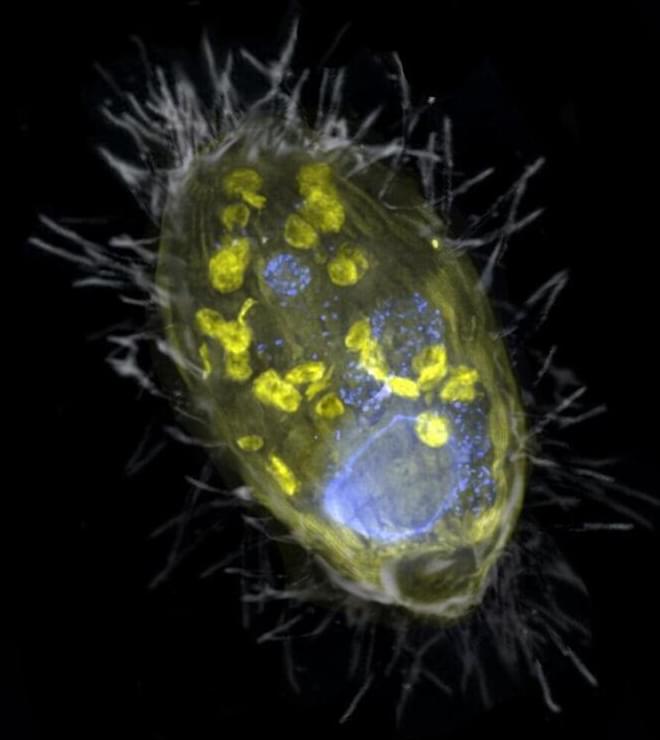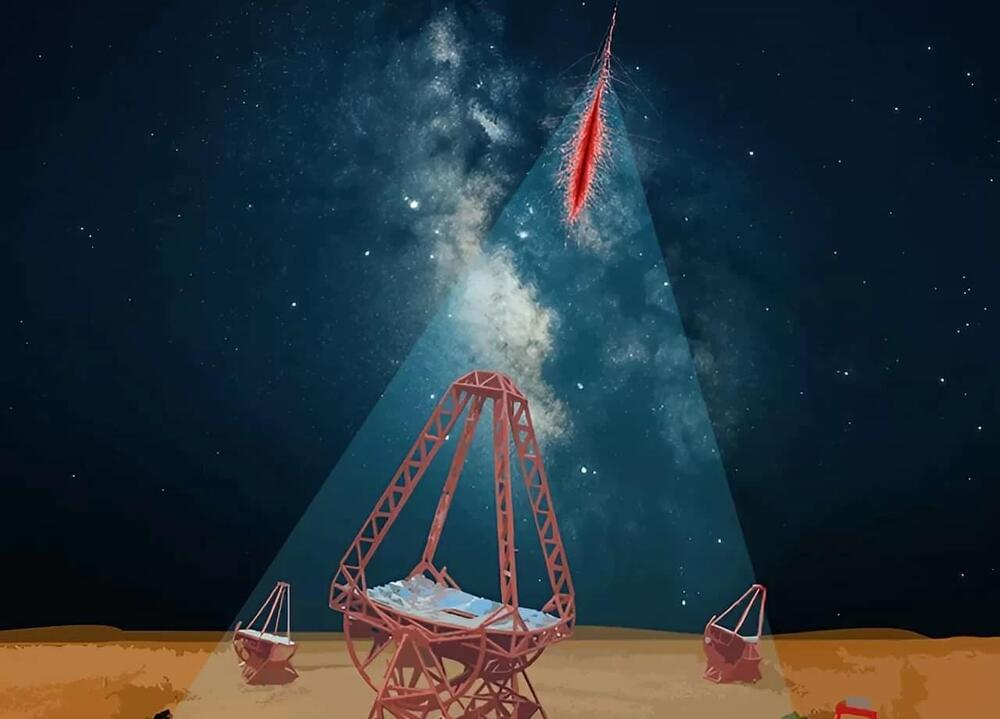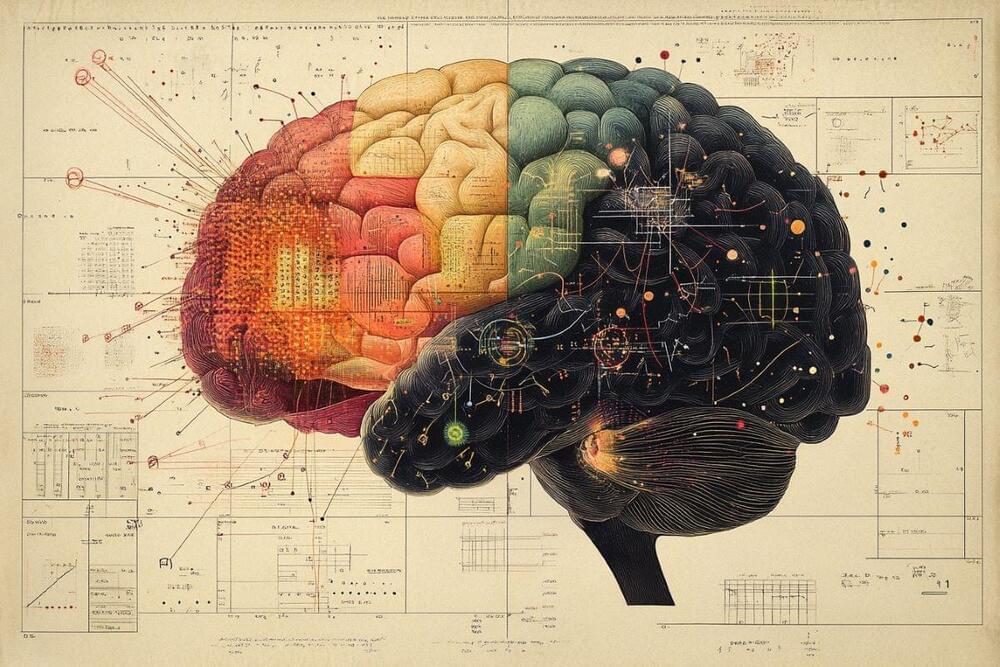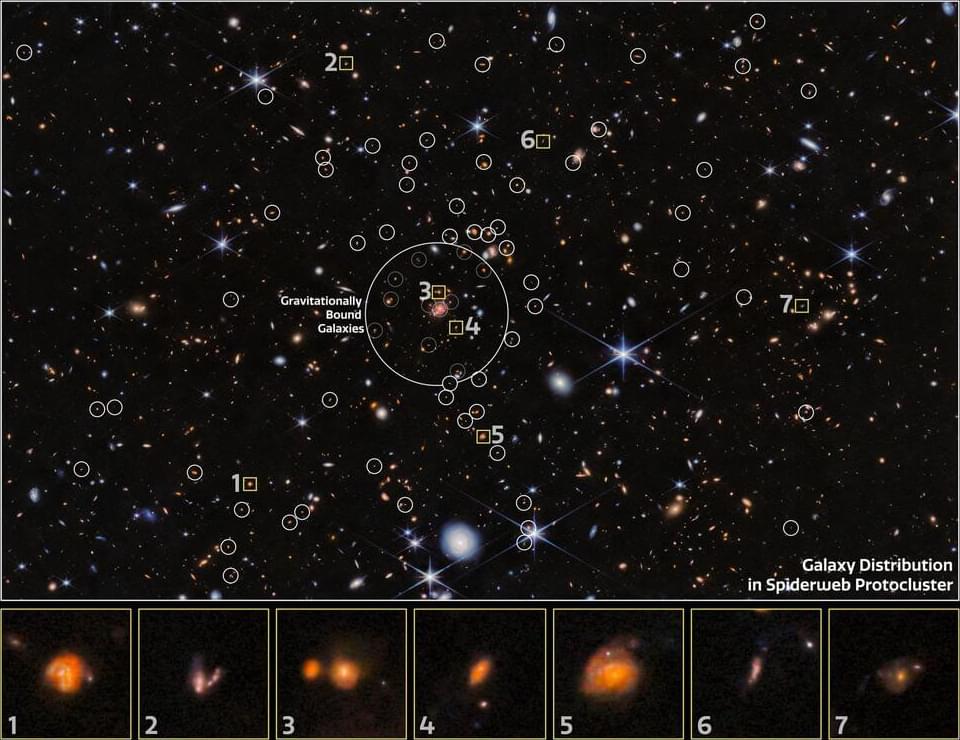The company conducted a static fire with the booster in South Texas today (Dec. 9).



In 2021, scientists at the Max Planck Institute for Marine Microbiology in Bremen, Germany, reported an astonishing new form of symbiosis: They found a unique bacterium that lives inside a ciliate—a unicellular eukaryote—and provides it with energy. The symbiont’s role is thus strongly reminiscent of mitochondria, with the key difference that the endosymbiont derives energy from the respiration of nitrate, not oxygen.
Now the researchers from Bremen set out to learn more about the environmental distribution and diversity of these peculiar symbionts. “After our initial discovery of this symbiont in a freshwater lake, we wondered how common these organisms are in nature,” says Jana Milucka from the Max Planck Institute for Marine Microbiology. “Are they extremely rare and therefore eluded detection so long? Or do they exist elsewhere and if so, what are their metabolic capacities?”

The universe is a stage filled with extreme phenomena, where temperatures and energies reach unimaginable levels. In this context, there are objects such as supernova remnants, pulsars, and active galactic nuclei that generate charged particles and gamma rays with energies far exceeding those involved in nuclear processes like fusion within stars. These particles, as direct witnesses of extreme cosmic processes, offer key insights into the workings of the universe.
Gamma rays, for instance, have the ability to traverse space without being altered, providing direct information about their sources of origin. However, charged particles, known as cosmic rays, face a more complex journey. When interacting with the omnipresent magnetic fields of the cosmos, these particles are deflected and lose part of their energy, especially high-energy electrons and positrons, referred to as cosmic-ray electrons (CRe). With energies surpassing one teraelectronvolt (TeV)—a thousand times more than visible light— these particles gradually fade away, complicating the identification of their point of origin.
Detecting high-energy particles such as CRe is a monumental task. Space instruments, with their limited detection areas, fail to capture sufficient particles at these extreme energies. On the other hand, ground-based observatories face an additional challenge: distinguishing particle cascades triggered by cosmic-ray electrons from the far more frequent ones generated by protons and heavier cosmic-ray nuclei.

Summary: Human number cognition may be rooted in the putamen, a deep brain structure traditionally associated with movement rather than abstract thought. Neurosurgery patients demonstrated activity in this area while processing numbers as symbols, words, and concepts, suggesting that numerical understanding emerged early in evolution.
Researchers also observed activity in expected areas like the parietal lobe, highlighting how different brain regions collaborate in number processing. These findings could improve surgical outcomes by protecting areas crucial for number cognition and open pathways to enhancing math learning through targeted interventions.

NASA astronaut Don Pettit captured a stunning long-exposure photograph of two nearby galaxies—the Large Magellanic Cloud and the Small Magellanic Cloud—from the SpaceX Crew Dragon capsule. This rare shot offers a unique view of these galaxies, located over 160,000 light-years away, visible only from space or the Southern Hemisphere.

Astronomers using the James Webb Space Telescope have made significant discoveries within the Spiderweb protocluster, revealing the formation of new galaxies and challenging previous theories about gravitational interactions.
The infrared capabilities of Webb allowed for the observation of previously obscured galaxies, enhancing our understanding of galaxy assembly in one of the largest structures of the universe during its adolescent phase.
Understanding galaxy formation in early universe.
After a 10-month wait, Sora has arrived. Here’s why it’s had so many on the edge of their seats.

It was 1,229 CE in the monastery of St Sabas, near Jerusalem, and a monk named Johannes Myronas was in need of some parchment. He had evidently been tasked with creating a copy of the Euchologion – an important book of prayer and worship directions for Eastern Orthodox and Byzantine Catholic churches.
The problem was, parchment was expensive and hard to come by. Recycling was the name of the game, and Johannes had just the thing: a 200-year-old manuscript filled with old math notes that nobody was all that interested in anymore. Compared with the Holy Word, there was no contest: he pulled it apart, scraped the old text off, and used the pages for the new book – a technique known as palimpsesting.
You probably know where this is going. In creating his Euchologion, Johannes had – presumably unwittingly – destroyed one of the most valuable relics of Archimedes’s work. Not just some notebook or single treatise, even: the manuscript now known as “Codex C” contained multiple works from the ancient polymath, some of which now exist nowhere else in the world.

In the fast-paced world of electric vehicles (EVs), a major breakthrough in battery technology is set to significantly enhance energy storage capacity. This development arrives at a crucial moment, as the EV industry is experiencing rapid growth, making it an ideal time for such a transformative advancement.
Researchers at Pohang University of Science & Technology (POSTECH) have introduced a revolutionary technique that can amplify the energy storage capacity of batteries by an astonishing tenfold. This leap forward not only propels battery technology to new heights but also has the potential to reshape the entire landscape of electric vehicles.
The key to understanding battery function lies in the anode, the component responsible for storing power during charging and then releasing it when the battery is in use. In most modern lithium batteries, graphite is the predominant material used for anodes.
